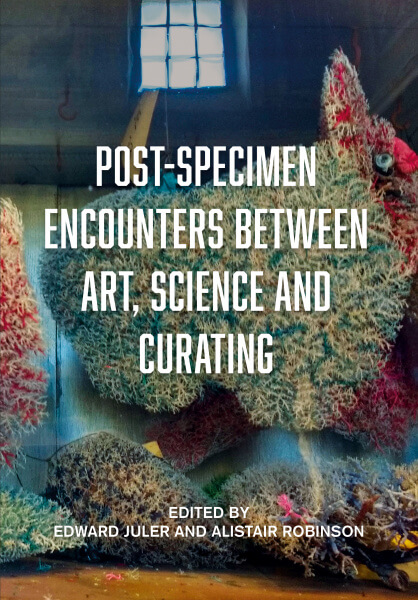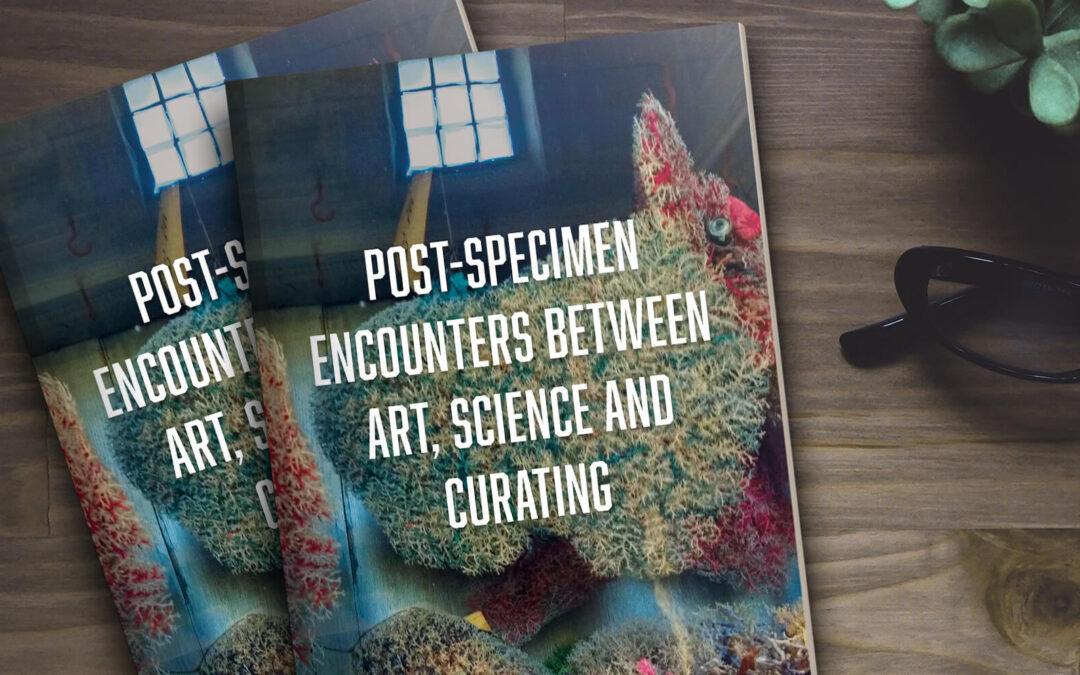Post-Specimen Encounters Between Art, Science and Curating (Book)
Rethinking Art Practice and Objecthood through Scientific Collections
USD 45.00 | 250 pages | Jan 12, 2021
ISBN 9781789383119, Paperback, 244 x 170 mm
Available here: Intellect
Examines how scientific objects in museums and other collections act as inspiration to contemporary art practice, its histories, curating and aesthetics. Cross-disciplinary essays from leading arts professionals explore how scientific encounters in museums provoke new modes of creative thinking about art, science and curating. 84 col. illus.
With chapters written by John Mack, Alistair Robinson, Marion Endt-Jones, Rahma Shazam, Gavin Parkinson, Edward Juler, Nadia Licktig, Christy Ducker, Irene Brown, Richard Talbot, Jane Wildgoose, Gemma Anderson, Andrew Patrizio, Ludmilla Jordanova

This edited collection explores a subject of great potential for both art historians and museologists – that of the nature of the specimen and how it might be reinterpreted. Through its cross-disciplinary contributions, written by a team of art historians, artists, poets, anthropologists, critics and curators, this book looks at how artistic encounters in museums, ranging from anatomy museums to contemporary cabinets of curiosity, can provoke new modes of thinking about art, science and curating.
Museological literature in the past focused on artefacts or objects; this is an original contribution to the field and offers new readings of old issues, inspiring new understandings of the relationships between art, science and curating.
Brings together international expertise from art practitioners, historians, creative writers and theorists in France, the United States, United Kingdom and New Zealand. Contributions from creative practitioners draw upon their own experience of producing artworks in response to specific scientific collections while historians, anthropologists, critics and writers examine how museums stimulate, incite and otherwise inspire artistic awareness of science and its specimens.
One of the most important contributions this book will make is drawing together several threads of research and practice to encourage interdisciplinary discussion.
It provides new ways of thinking about the relationships between art, science, museums and their objects. It concentrates on the ways in which scientific collections kindle novel aesthetic strategies and inspire new scholarly interpretations of art, science, curating and epistemology. In so doing it will make a considerable contribution to the fields of art writing, creative practice, art theory, the history of science and curating.
Included within Alistair Robinson’s essay is a section on Kelly Richardson’s Pillars of Dawn.
